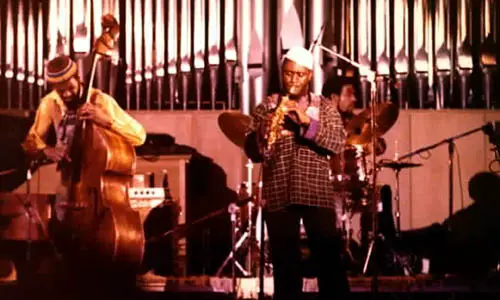Tagged as “one of America’s original art forms” and spanning over a period of 100 years, Jazz is a genre of music that originated in the late 19th and early 20th century in African American communities. Follow the pointers below to learn more about “The Jazz Age” (the period between the end of World War I and the Great Depression), its emergence and after.
1. Jazz primarily emerged as various independent musical styles in the U.S. with a performance orientation structure.
2. William Christopher Handy, better known as the “Father of the Blues”, was the first composer and musician to play blues music from which jazz tunes was first developed.
3. Another notable African-American cornetist, named Charles Joseph “Buddy” Bolden is today sometimes addressed as the “Father of Jazz”. He was regarded by contemporaries as a key figure in the development of a New Orleans style of rag-time music, now known as “Jazz”.
4. Louis Armstrong was another influential artist known for improvising jazz solo as we know it today. Born in New Orleans, Louisiana, he began playing the cornet when he was just 13.
5. He once observed: “At one time they were calling it levee camp music then in my day it was ragtime. When I got up North I commenced to hear about jazz, Chicago style, Dixieland, swing. All refinements of what we played in New Orleans…there ain’t nothing new.”
6. Even James Louis “J. J.” Johnson, one of the first trombonists to embrace bebop music, once said in his 1988 interview: “Jazz is restless. It won’t stay put and it never will.” He was an American jazz trombonist, composer and arranger.
7. Clarence Williams, an American jazz pianist, vocalist, composer, promoter, publisher and theatrical producer, was the first artist to use Jazz in a song. From there, the form set out to become one of the most popular unique styles of music in the world.
8. In a very short period of time, Jazz spread throughout the world crossing national, regional and local music boundaries, giving rise to many distinctive styles. And today, because of encompassing a range of varieties, it has proved to be a style very difficult to define.
9. The form closely uses improvisation, syncopation, polyrhythms and the swung note, blended with aspects of mostly American popular music, European harmony, brass band tradition, and African musical elements like ragtime and blue notes. It also includes modern pop elements.
10. In the 1910s, New Orleans jazz began, combining earlier brass band marches, French quadrilles, biguine, ragtime and blues with collective polyphonic improvisation.
11. Since 1920s, saxophone became one of the most distinctive instruments to be used in jazz live music. Before then, it was used as a Belgian instrument during orchestral performances.
12. 1930s was dedicated to dance-oriented swing big bands, Kansas City jazz, a hard-swinging, bluesy, improvisational style and Gypsy jazz that emphasizes on musette waltzes.
13. In the 1940s, Bebop surfaced, shifting the form from danceable popular music to a so-called challenging “musician’s music”, played at faster tempos and using more chord-based improvisation.
14. The end of 1940s marked the introduction of “Cool jazz”, bringing in calmer and smoother sounds with long, linear melodic lines.
15. The 1950s saw the advent of “Free jazz”, which played without regular meter, beat and formal structures.
16. The mid-1950s witnessed Hard bop and the late 1950s saw the onset of Modal jazz. Hard bop (a subgenre of jazz) is an extension of bebop music while Modal jazz is jazz that uses musical modes rather than chord progressions as a harmonic framework.
17. Between the late 1960s and early 1970s, Jazz-rock fusion developed, combining jazz improvisation with rock rhythms, electric instruments and the highly amplified stage sound of rock.
18. In the early 1980s, a new form called “Smooth jazz” came into limelight, gathering significant radio airplay. Besides, other styles and genres that flourish today are Latin jazz and Afro-Cuban jazz.
19. Jazz introduced a new meaning of dance, especially for America. Some dance forms linked to this style are Charleston, Black Bottom, Tango, Shimmies, and the Trot.
20. F. Scott Fitzgerald’s book, the “Great Gatsby”, is based on the Jazz Age, as mentioned above. He was also the one to name the Jazz era as “The Jazz Age”.









Leave a Reply